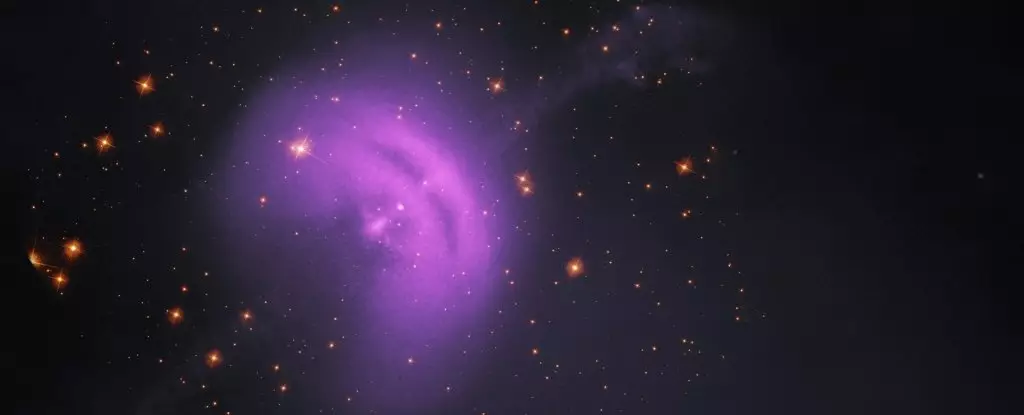Cosmic rays, high-energy particles from outer space, constantly bombard Earth, impacting our atmosphere and offering a unique insight into the processes occurring in the universe. Among these particles, cosmic ray electrons, also known as cosmic ray electrons (CRe) and positrons, have garnered special attention due to their incredibly high energies spotted recently by the H.E.S.S. Observatory in Namibia. These particles, with energies peaking at 40 teraelectronvolts, hint at origins surprisingly close to our solar system. Such discoveries challenge the understanding of cosmic ray phenomena, urging a deeper examination of their sources and characteristics.
Electrons and positrons classified as cosmic rays play a crucial role in astrophysical research, representing a minuscule fraction of overall cosmic rays. Their high energies typically indicate an origin from extreme cosmic events, including supernova remnants, black holes, and pulsars. The detection of CRe with energies as high as 40 teraelectronvolts is unprecedented, primarily due to their rarity and the energetic processes involved in their acceleration. Kathrin Egberts, an astrophysicist from the University of Potsdam, asserts that the origins of these particles likely reside within a mere few thousand light-years—a relatively short cosmological distance when contextualized against the vastness of the Milky Way galaxy.
Unraveling the Mysteries of Origin
Understanding where these powerful cosmic rays originate poses significant challenges, primarily due to their chaotic trajectories caused by interactions with magnetic fields in space. The H.E.S.S. Observatory, designed specifically to detect faint Cherenkov radiation produced by cosmic rays as they enter the Earth’s atmosphere, faced a complex task in distinguishing between events caused by CRe and gamma rays, which behave differently. Gamma rays travel in straight lines, allowing astronomers to trace their origins more effectively, whereas CRe’s erratic pathways complicate source identification.
To elucidate these high-energy electrons, researchers meticulously analyzed extensive data from H.E.S.S., compiling a list of potential CRe events. They acknowledge the possibility that some detected events might actually be gamma rays, yet the substantial number of candidates allows for statistical inferences that shed light on their origins. The result: a distinct energy range marked by a sharp lower cut-off point at 1.17 teraelectronvolts, suggesting limited sources are responsible for these emissions.
The phenomenon of energy loss among cosmic ray electrons as they traverse space significantly aids in narrowing down potential sources. As charged particles, these electrons lose energy through mechanisms like synchrotron radiation and inverse Compton scattering. Such interactions result in spiral trajectories around magnetic field lines, radiating energy across various electromagnetic spectrum ranges. The rapid energy depletion necessitates that these particles come from much closer airspace since they would otherwise lack sufficient energy by the time they reached Earth.
This conclusion aggravates the enigma surrounding their origins. The relatively small volume of space from which these cosmic ray electrons could originate narrows down potential sources even further, with candidates including the Monogem Ring, the Wolf-Rayet star γ2 Velorum, or known pulsars like Vela or Geminga. Alternatively, they could potentially arise from an ancient supernova remnant long faded from view, emphasizing the uncertainties within cosmic ray research.
The implications of these findings reverberate beyond just identifying sources; they illuminate critical facets of cosmic behavior and the mechanisms that energize the universe. As researchers continue to analyze the trajectory of these particles and the corresponding energy emissions, there lies immense potential for unraveling not just where these high-energy cosmic rays come from, but also what their existence signifies within greater cosmic contexts.
The findings from H.E.S.S. serve as a groundbreaking reference point for future studies on cosmic rays, emphasizing the need for continued exploration in this relatively unexplored energy range. The quest to determine a preferred direction from which these high-energy CRe arrive is fraught with challenges, yet it holds promise for refining our understanding of the local cosmic neighborhood. As astrophysicists delve deeper into these cosmic enigmas, the knowledge gained may reshape current astrophysical theories and inform an evolving discourse on the universe’s energetic landscape.


Leave a Reply